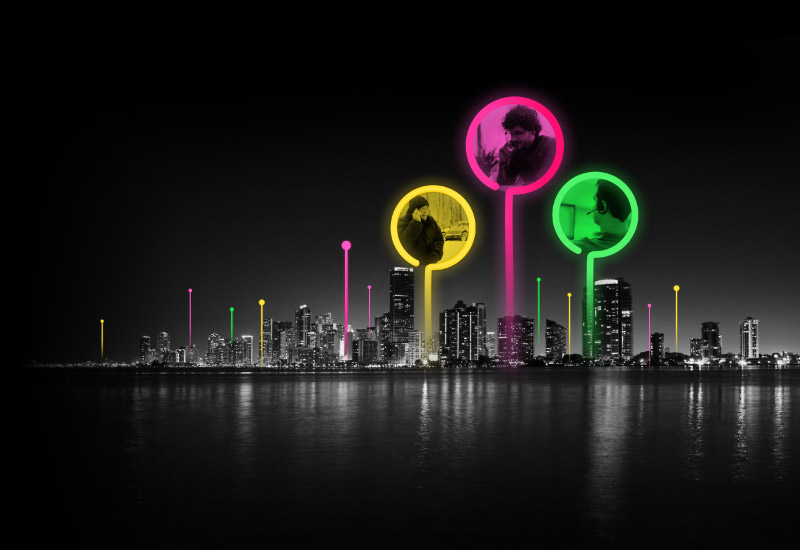Through SADA’s clear project plan and quick rollout, Kravet found Gemini Enterprise is the right foundation for enterprise AI agents, saving hours on search and producing more relevant results.
/ Learn moreViiz Communications launches next-generation 911 call solution on Google Cloud CCaaS with SADA’s help

/ AT A GLANCE
SADA implemented Google Cloud Call Center as a Service for Viiz to leverage for 911 call center emergency communications

INDUSTRY Telecommunications
REDUCED Non-emergency call times by 60%
RECOGNIZED Intent of 911 callers 98.8% of the time

Facing rapid change in 911 services
Even the most traditional and critical services are undergoing profound transformations in this era of rapid structural changes. Across North America, Public Safety Answering Points (PSAPs) are increasingly burdened by non-emergency inquiries ranging from noise complaints to general information requests, diverting critical resources from true emergencies, according to public safety publications. This pervasive “PSAP gap” underscores an urgent need for innovative solutions that can intelligently triage calls, enhance operational efficiency, and ultimately, ensure the swift delivery of life-saving services.
As a telecommunications industry leader, Viiz Communications has over two decades of experience providing operator and directory assistance services, with call centers in the United States, Canada, and offshore. Leveraging this extensive background in call center management and proprietary software, Viiz has recently expanded into the emergency services market, focusing on solutions to address the challenges faced by 911 centers.
Business challenge
Staffing issues a chronic problem for 911 call centers
The landscape of 911 call centers has become increasingly complex, marked by a persistent lack of personnel that has hindered their ability to provide optimal emergency response. “The biggest pain point in the 911 call center industry that we serve has been staffing,” says Chad Brothers, VP of Emergency Services Programs at Viiz Communications. “There’s been a chronic staffing shortage in our customer base for the better part of a decade.”
This shortage is exacerbated by the high-stress nature of 911 operations, making it difficult for centers to both hire and retain qualified agents. Initial attempts to address this predicament focused on operational and policy changes to make 911 work a more fulfilling experience, but these efforts proved insufficient. This situation forced a shift toward technological solutions to improve the process.
Overwhelming volume of non-emergency calls
Compounding the staffing issue is the overwhelming number of non-emergency calls that divert critical resources from genuine emergencies. With millions of calls to 911 services every year, a significant proportion aren’t immediate life-threatening situations.
“When you look at the overall volume of 911 calls in North America, it’s a 60-40 split between non-emergency and emergency calls, and 60% of the calls are non-emergency,” says Brothers. The impact on emergency response efficiency is significant, as agents are constantly shifting between critical and non-critical calls.
This dual challenge of staffing shortages and call volume overload led Viiz to identify a critical need for a system capable of differentiating between emergency and non-emergency calls. “For any technical solution for a 911 call center, you have to be able to identify and categorize the differences between a non-emergency and an emergency,” says Brothers.
Unique requirements of 911 call centers
Despite efforts to standardize technological approaches through initiatives like Next Generation 911, local PSAPs exhibit unique approaches in their service operations. “There’s an old saying in our industry: If you’ve seen one 911 center, you’ve seen one 911 center,” says Brothers. “With different law enforcement, fire, and EMS agencies, regional agencies all have different leadership and approaches to how they provide first responders to their communities.”
This variability means that a one-size-fits-all approach is not feasible, necessitating a flexible and customizable solution that can cater to the distinct needs of communities and agencies. The inability of current systems to easily scale or adapt to these unique requirements hampered Viiz’s ability to expand their services and take on new customers, thus driving the pursuit of a more agile and intelligent call center solution.
Solution
Recognizing the critical need for a transformative solution in the public safety sector, Viiz embarked on a strategic collaboration with SADA, An Insight company, and Google Cloud to develop ViizViital, a generative AI-powered 911 support solution.
This engagement was a natural fit, leveraging Viiz’s deep understanding of 911 call center operations and SADA’s expertise as a Google Cloud delivery partner for Contact Center as a Service, previously known as Contact Center AI Platform.
Positioning Viiz for an AI-powered 911 call center solution
Their foundational experience in managing call centers uniquely positioned Viiz to launch a GenAI-powered solution for 911 services. Additionally, the absence of an existing Google Cloud-based solution in the public safety market presented a significant opportunity for Viiz.
Many of Viiz’s technology functions are already hosted on Google Cloud or in the process of migrating there, and the technical capabilities of Google Cloud were also a significant draw. “Google Cloud has better large language models (LLMs) than other platforms,” says Brothers. “They are outpacing their cloud competitors when it comes to LLMs, and the AI tools that they’ve created are more user-friendly.”
Accelerating the effort for a Google Cloud-based 911 solution
To accelerate their effort to bring the first Google Cloud-based 911 call center solution to market, Viiz wanted to leverage SADA’s strong expertise in designing and deploying CCaaS solutions. SADA’s expertise would be instrumental in realizing Viiz’s objectives. Viiz recognized that while they had unparalleled knowledge of call center management, they lacked in-depth experience with the intricacies of Google Cloud’s CCaaS platform and Conversational Agents (formerly Dialogflow CX).
“SADA provided a small army of people really well-versed in the platform to help us bridge the knowledge gap on Google Cloud CCaaS and Conversational Agents/Dialogflow CX and work with us until we got to a minimum viable product,” says Brothers.
Ongoing support for scaling the solution to customers
Once the MVP (minimum viable product) version of ViizViital was launched, SADA continued to help Viiz shape and scale the platform in order to make deliveries to their end customers. SADA continues to offer ad hoc support to the Viiz team as they master the implementation of CCaaS.
“We’ve been able to stay connected with SADA as we continue to learn and hone our skills on how to support ViizViital over the long term,” says Brothers. “It’s been a fantastic relationship for us, to be able to keep some of the SADA folks on board who helped us do the MVP, and then continue to work with us as we onboard our first customers and as we continue to up-skill our own resources.”
This continuous support ensured that Viiz could not only implement the MVP but also scale and refine the solution as they rolled it out to their first customers. The specific Google Cloud solutions and other technologies SADA implemented for ViizViital include:
- CCaaS (Contact Center as a Service): The overarching platform providing the foundation for the intelligent call center
- Conversational Agents: Used for building intelligent conversational agents, leveraging natural language understanding and generation powered by generative AI
- Google Cloud Storage: For data storage and management
- Sessionless SMS: To facilitate text-based interactions and information sharing
- Bring Your Own Carrier capabilities: Enabling Viiz to integrate their existing SIP-based telephony infrastructure
- Vertex AI: For advanced AI capabilities, including Retrieval Augmented Generation
- Cloud Run: For deploying scalable and serverless applications
- Website data extraction: A system to extract data from city websites that will be used in the 911 phone system
SADA’s configuration of the CCaaS tenant was designed to integrate seamlessly with Viiz’s existing proprietary agent and queue setup. They set up CCaaS with an “agentless” license, meaning human agents would not be directly assigned within the CCaaS platform.
Impact
As a result of working with SADA on the implementation of their CCaaS 911 call center solution, Viiz has successfully launched its ViizViital 911 virtual assistant (VA) to market. In testing, the average 911 non-emergency call times have been reduced by 60%, dropping to approximately one minute from an average of two and a half minutes previously. This is based on ViizViital’s ability to differentiate the intent of callers. This efficiency gain is also observed when the virtual assistant determines a transfer is necessary, with these interactions typically taking less time.
Accurate intent recognition
The generative AI feature of the virtual assistant has proven highly effective in differentiating between emergency and non-emergency calls. Initial observations show that the virtual assistant accurately identifies the caller’s initial intent in a vast majority of cases (98.8%), with only a minimal number of instances requiring manual retraining. The platform’s ability to fill in missing training phrases further aids in the rapid improvement and optimization of VA performance.
“By and large, ViizViital understands the initial intent,” says Brothers. “Out of say 1,000 calls, it’ll miss the intent in a dozen. I’m shocked at how well it recognizes the intent. Now the interesting thing is, once we see the caller’s intent being different than what we would expect, it’s so easy to go in and add training phrases to pick it right back up, and train it. Within 30 seconds, I can retrain ViizViital because it missed a training phrase.”
Enhanced agent focus
By effectively triaging and handling non-emergency calls, ViizViital is expected to significantly reduce the workload and stress on 911 agents. This allows them to focus on their core mission of responding to emergency calls, minimizing context shifting and potentially improving mental health aspects within the demanding environment of 911 centers.
Valuable feedback and continued development
Feedback from initial testing, particularly with ViizViital’s first customer, a large suburban county in PA, has been both positive and constructive. The system successfully identifies emergency and non-emergency calls and facilitates quick transfers to human agents when needed.
The ability of the virtual assistant to provide information and offer sessionless SMS options has also been highlighted as a positive. The testing phase also led to the development of a crucial disambiguation tool, not initially part of the MVP, to address the complexity of serving multiple municipalities within a single county.
I'm still shocked, and a little bit spoiled, by the speed at which SADA was able to deliver—and the capabilities they provided—within a 10-week implementation timeframe. Now that I've had the SADA team at my disposal for the ViizViital build, I need every one of my technology providers to operate with the same level of efficiency and acuity as the SADA team going forward.”
— Chad Brothers | VP of Emergency Services at Viiz Communications
More customer stories
What we're up to
Solve not just for today but for what's next.
We'll help you harness the immense power of Google Cloud to solve your business challenge and transform the way you work.

